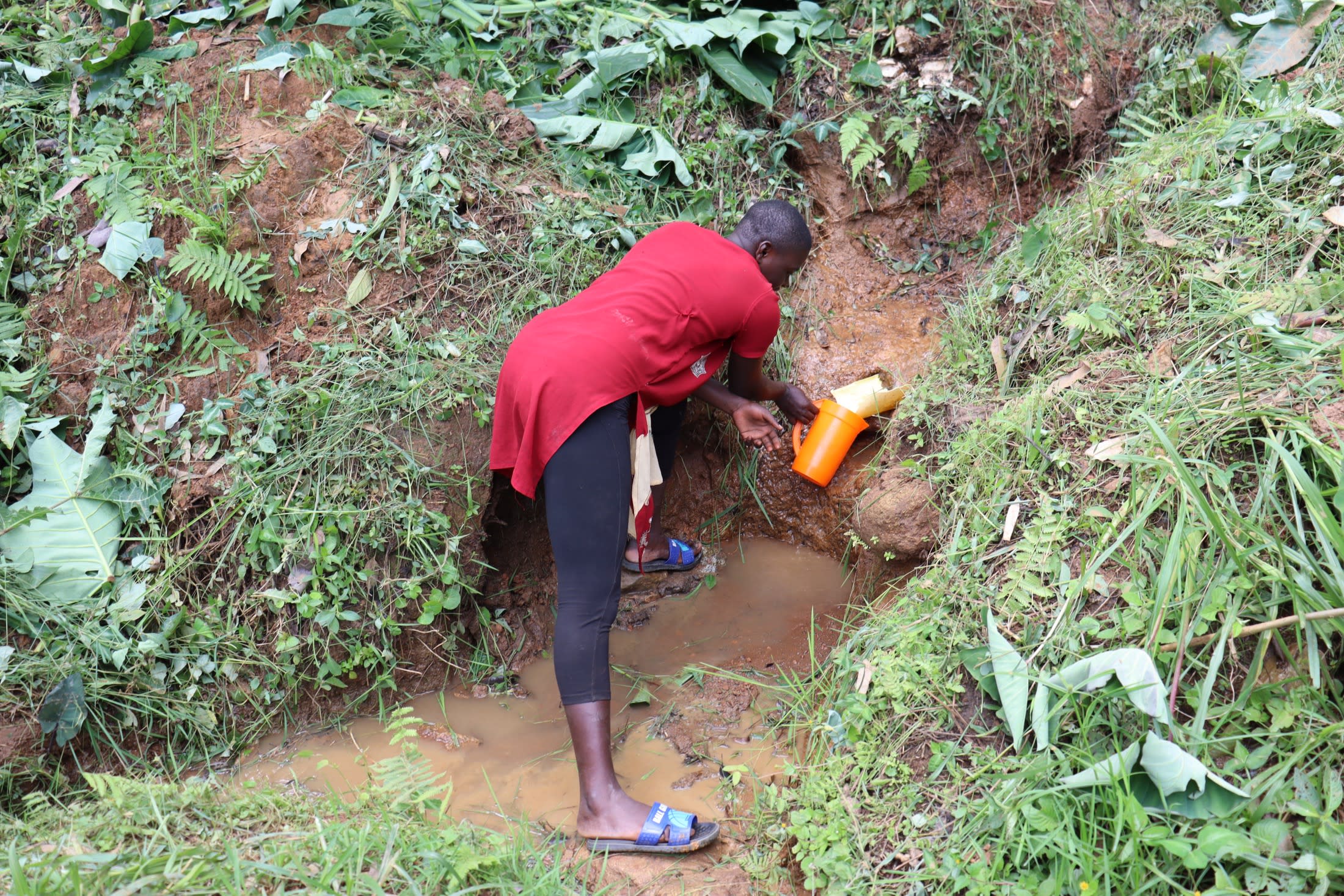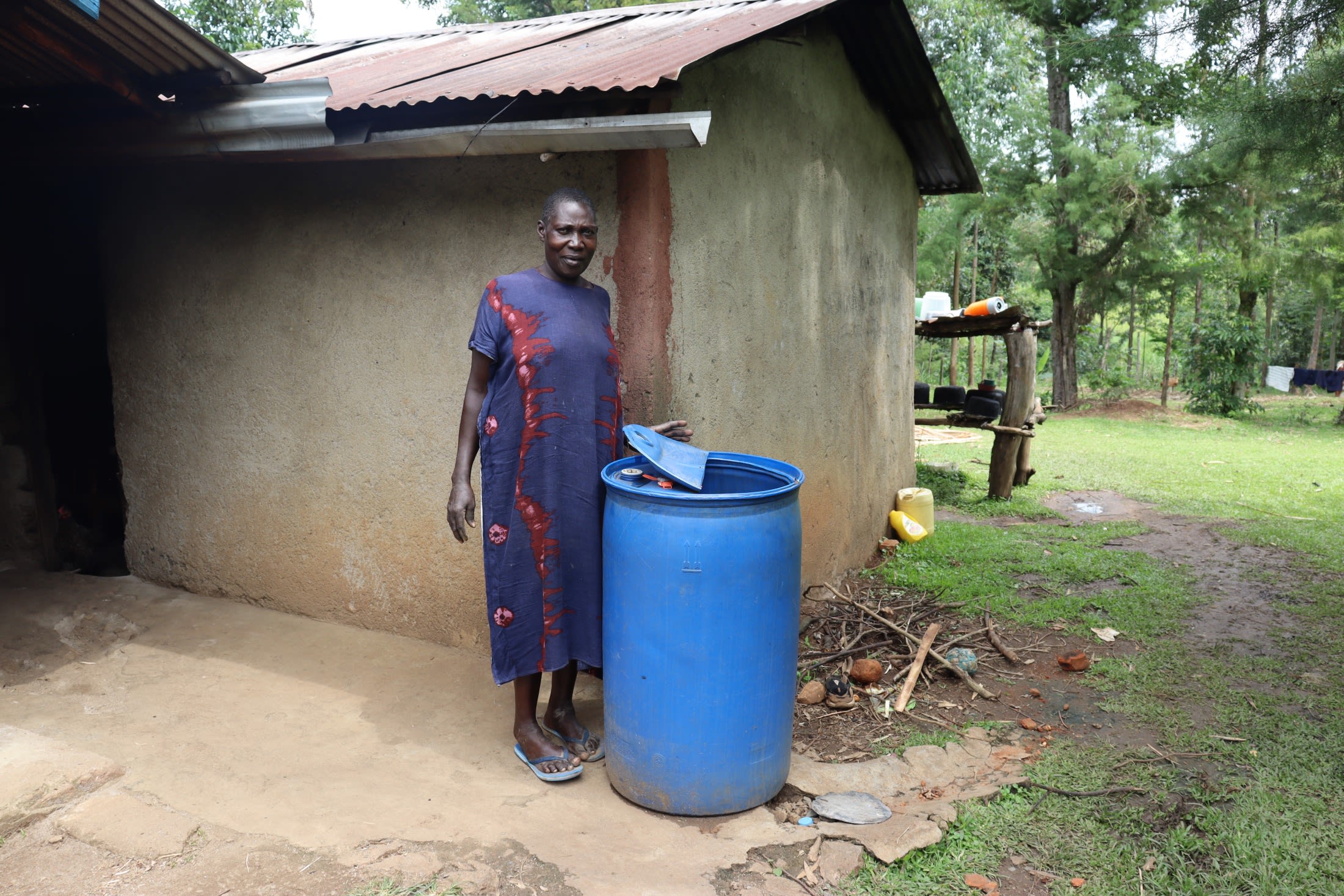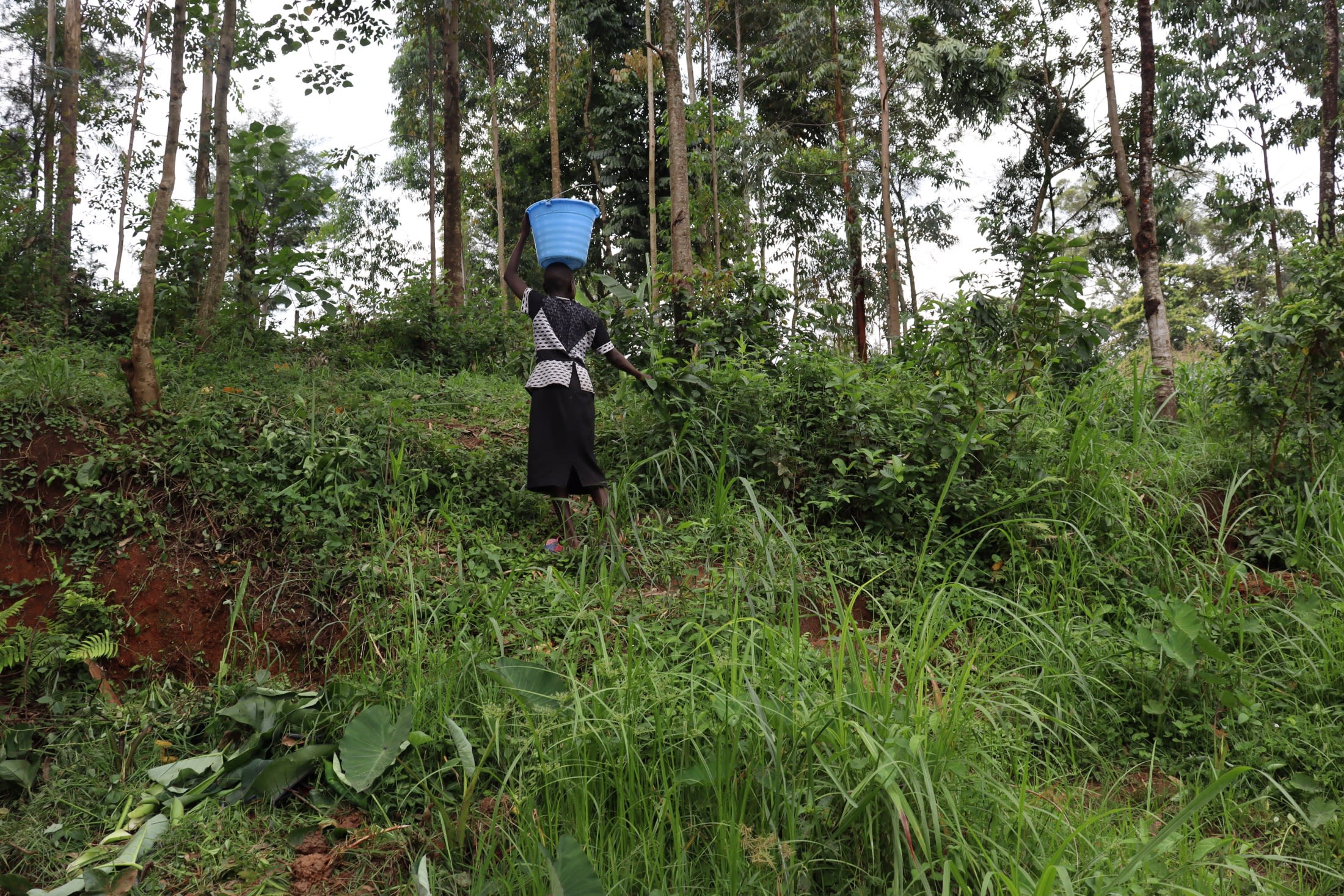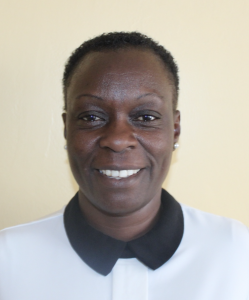Alex Amalemba Spring is the primary water source for the 140 community members of Makhwabuye, other than rainwater they can collect during the short rainy season.
The spring is unprotected and open to contamination, especially when it rains, causing people to get sick from drinking the dirty water. Stomachaches and diarrhea are common daily problems, and many have suffered from typhoid.

The persistent illnesses community members endure due to drinking dirty water cause people to suffer not only physically but also financially. "The water has really affected me. I had typhoid, which was difficult to treat. I used a lot of money on medication," said Margaret Amalemba, 61, shown below by her rainwater barrel.

The spring presents several other issues that can be solved by protecting it. It is hard to access (even harder when it rains) and needs stairs. People waste the time needed to engage in other productive activities by queuing in long lines at the spring waiting for their turn to collect water. The new water pipe will ensure a steady, sufficient flow of water, making collection times shorter.

Students need their valuable time and energy returned to focus on their studies to allow them a bright future. "The unprotected spring is overcrowded when I come from school because, in the evening, many people congregate to draw water from the spring. This makes me delay my studies," said Mildred P., 14.
“Better water sources also mean less expenditure on health, as people are less likely to fall ill and incur medical costs, and are better able to remain economically productive. With children particularly at risk from water-related diseases, access to improved sources of water can result in better health and therefore better school attendance, with longer-term consequences for their lives.” - WHO Africa
Agriculture is the key economic activity in the community to provide for families and pay their children's school fees. All of the most common crops and livestock—sugarcane, maize, beans, cattle, poultry, and sheep—require sufficient water to thrive. These income-generating projects can succeed by protecting the spring, and people can enjoy their lives more fully.
What We Can Do:
Spring Protection
Protecting the spring will help provide access to cleaner and safer water and reduce the time people have to spend to fetch it. Construction will keep surface runoff and other contaminants out of the water. With the community’s high involvement in the process, there should be a good sense of responsibility and ownership for the new clean water source.
Fetching water is a task predominantly carried out by women and young girls. Protecting the spring and offering training and support will, therefore, help empower the female members of the community by freeing up more of their time and energy to engage and invest in income-generating activities and their education.
Training on Health, Hygiene and More
To hold trainings during the pandemic, we work closely with both community leaders and the local government to approve small groups to attend training. We ask community leaders to invite a select yet representative group of people to attend training who will then act as ambassadors to the rest of the community to share what they learn. We also communicate our expectations of physical distancing and wearing masks for all who choose to attend.
The training will focus on improved hygiene, health, and sanitation habits in this community. With the community’s input, we will identify key leverage points where they can alter their practices at the personal, household, and community levels to affect change. This training will help to ensure participants have the knowledge they need about healthy practices and their importance to make the most of their water point as soon as water is flowing.
Our team of facilitators will use a variety of methods to train community members. Some of these methods include participatory hygiene and sanitation transformation, asset-based community development, group discussions, handouts, and demonstrations at the spring.
One of the most important issues we plan to cover is the handling, storage, and treatment of water. Having a clean water source will be extremely helpful, but it is useless if water gets contaminated by the time it is consumed. We and the community strongly believe that all of these components will work together to improve living standards here, which will help to unlock the potential for these community members to live better, healthier lives.
We will then conduct a small series of follow-up trainings before transitioning to our regularly scheduled support visits throughout the year.
Training will result in the formation of a water user committee, elected by their peers, that will oversee the operations and maintenance of the spring. The committee will enforce proper behavior around the spring and delegate tasks that will help preserve the site, such as building a fence and digging proper drainage channels. The fence will keep out destructive animals and unwanted waste, and the drainage will keep the area’s mosquito population at a minimum.

 Protected Spring
Protected Spring
 Rehabilitation Project
Rehabilitation Project















 In coordination with brickwork, we pitched stones on both sides of the spring's drainage channel. We then cemented and plastered each stone, forming the rub walls. These walls discourage people and animals from standing in that area, which could cause soil erosion and a clogged drainage area.
In coordination with brickwork, we pitched stones on both sides of the spring's drainage channel. We then cemented and plastered each stone, forming the rub walls. These walls discourage people and animals from standing in that area, which could cause soil erosion and a clogged drainage area.


















